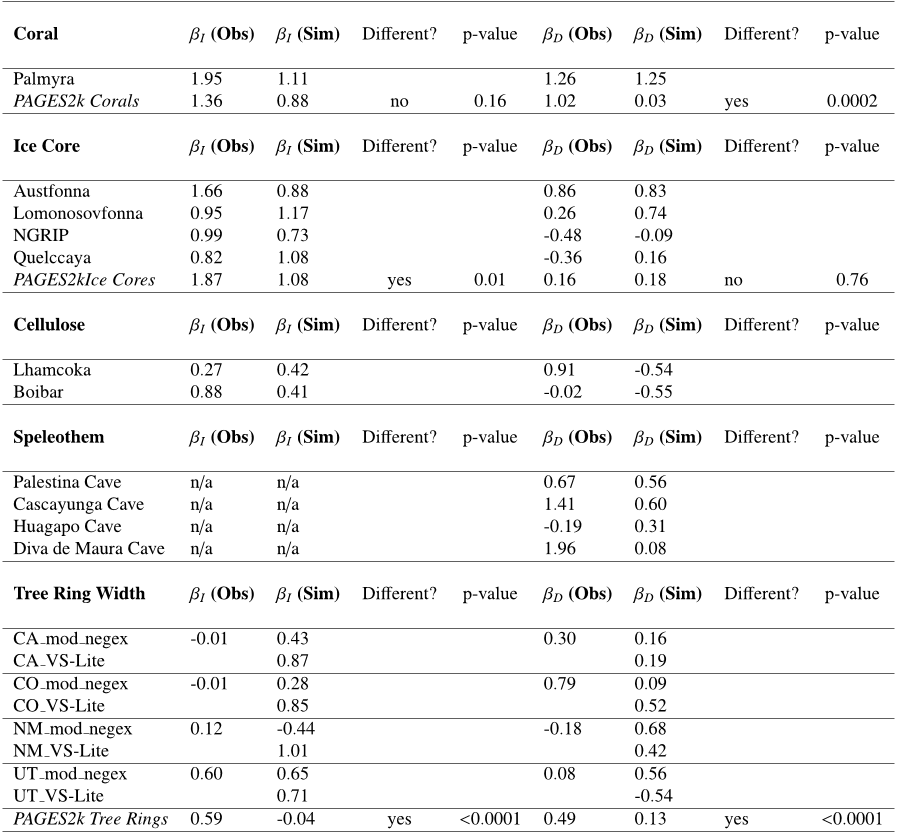Q1. What contributions have the authors mentioned in the paper "Improved spectral comparisons of paleoclimate models and observations via proxy system modeling: implications for multi-decadal variability" ?
In this paper the authors bridge this gap via a forward modeling approach, coupled to an isotope-enabled GCM. The paper addresses the following questions: ( 1 ) do forward modeled “ pseudoproxies ” exhibit variability comparable to proxy data ? The authors apply their method to representative case studies, and parlay these insights into an analysis of the PAGES2k database ( ? ). The authors conclude that, specific to this set of PSMs and isotope-enabled model, the paleoclimate record may exhibit larger low-frequency variability than GCMs currently simulate, indicative of ∗Corresponding author Email addresses: sylvia 11 dee @ brown. The authors find that current proxy system models ( PSMs ) can help resolve model-data discrepancies on interannual to decadal timescales, but can not account for the mismatch in variance on multi-decadal to centennial timescales.





